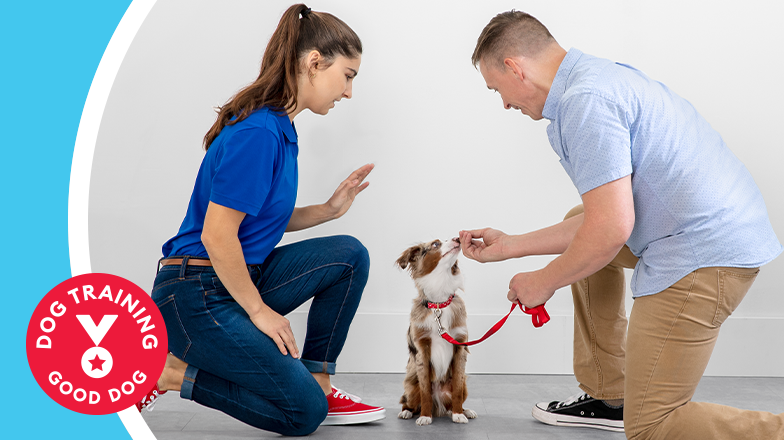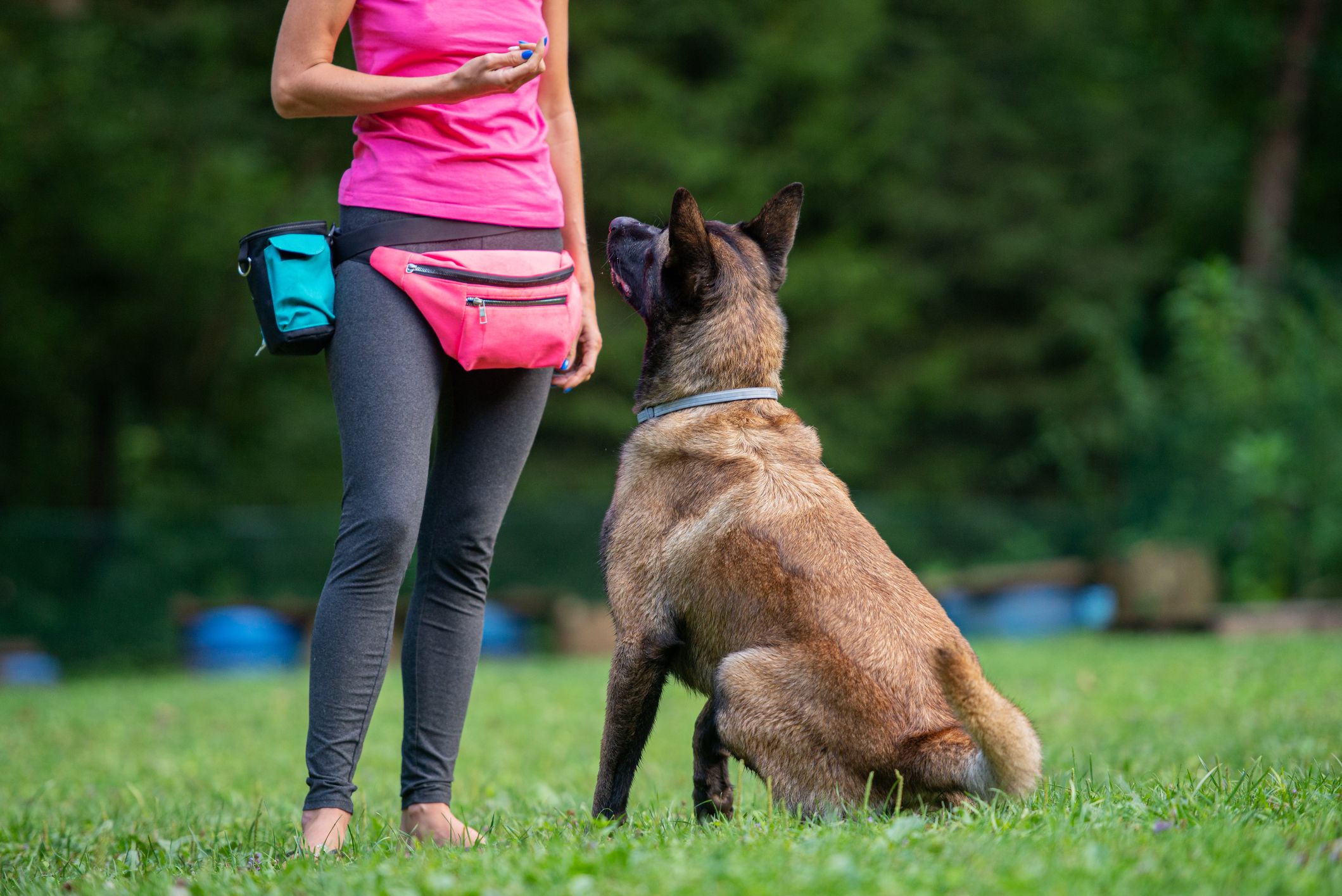Transform Your Pet's Actions With Proven Training Techniques
Transforming your dog's habits calls for a nuanced understanding of their individual qualities and demands, as well as the application of proven training methods. By using positive support and identifying vital add their body language, you can successfully address common behavioral issues such as excessive jumping or barking. Consistency in your training technique not just improves obedience but also cultivates a much deeper bond of depend on and respect between you and your animal. Nonetheless, the course to effective makeover might offer unanticipated difficulties that warrant more expedition.
Comprehending Pet Actions
Understanding pet habits is important for effective training and communication in between human beings and their canine friends. Canines, as social pets, display a range of behaviors affected by genes, atmosphere, and experiences - Dog training. Identifying these actions aids proprietors tailor their training approaches to meet the certain needs of their canines
Secret facets of dog behavior consist of body language, vocalizations, and social interactions. In addition, socializing plays an essential function in shaping behavior; pet dogs that interact positively with various other animals and various individuals are generally more adaptable and well-adjusted.
In addition, recognizing tension signals-- such as evasion, pacing, or panting habits-- can prevent rise right into much more significant concerns. Proprietors who are attuned to their canine's habits can develop a safe and nurturing atmosphere, fostering count on and boosting the training process. Eventually, a deep understanding of canine actions lays the structure for an unified relationship and reliable training results, making sure both canines and their proprietors prosper together.
Positive Reinforcement Strategies
Positive support methods are commonly identified as one of the most reliable approaches for training pet dogs, promoting a favorable understanding environment. This method includes gratifying desired behaviors with treats, praise, or play, consequently motivating the pet to repeat those behaviors. Unlike punitive approaches, positive reinforcement develops trust and strengthens the bond between the canine and the trainer.
Incentives ought to be offered right away adhering to the wanted habits to help the pet dog make the link. Consistency is also crucial; utilizing the same commands and rewards assists the pet recognize what is expected.
It is very important to keep in mind that favorable support is not about bribery; instead, it has to do with enhancing etiquette. With time, as the pet finds out to associate certain activities with positive end results, the frequency of rewards can be slowly reduced, transitioning to spoken appreciation or recurring benefits. This technique not only urges obedience yet likewise advertises a pleased and confident pet, making training a more enjoyable experience for both events entailed.
Resolving Typical Problems
Dealing with common concerns throughout canine training is vital for making sure a harmonious and successful partnership between the pet dog and its proprietor. Many pet owners run into behavior challenges, such as extreme barking, jumping, and chain pulling. Comprehending the root causes of these behaviors is vital for reliable training.
Extreme barking may come from boredom, stress and anxiety, or an absence of socialization. To mitigate this, give adequate workout, mental excitement, and possibilities for social communication with both humans and various other dogs. Jumping can frequently signify excitement or discover this info here a need for interest. Educating the pet dog to rest upon greeting can redirect this actions positively.
Chain drawing is one more widespread issue, often resulting from a pet dog's enthusiasm to check out. Making use of appropriate leash managing techniques, combined with training procedures that encourage loose-leash strolling, can considerably boost this habits.
On top of that, problems like resource guarding or separation anxiety require customized methods. Steady desensitization and counter-conditioning can be efficient in addressing these challenges. By identifying and proactively taking care of these usual issues, dog owners can promote an extra pleasurable training experience and strengthen the bond with their canine buddies.
Uniformity in Training

To attain uniformity, it is vital that all participants of the home abide by the exact same training techniques. As an example, utilizing the very same spoken hints and hand signals makes this article certain that the pet dog obtains consistent messages. Furthermore, the timing of rewards and adjustments ought to correspond; instant support boosts the chance that the dog will certainly link the actions with the end result.
Routine practice sessions, paired with organized timetables for feeding, walking, and playtime, aid dogs expect and understand their setting, making them more receptive to training. Inevitably, consistency promotes a feeling of security and count on, empowering pet dogs to learn extra successfully.
Building a Strong Bond
How can cultivating a strong bond in between a pet and its proprietor improve the training experience? A solid partnership developed on trust fund and regard acts as the foundation for reliable training. When a canine really feels safe and secure in its link with its owner, it is most likely to display favorable actions and be receptive to learning. This bond motivates the pet dog to engage completely in training sessions, as it watches the proprietor as a resource of advice and assistance.
Additionally, article source a strong bond helps with much better interaction. Dogs are adept at reviewing human hints, and a trusting partnership enables more clear signals throughout training. Proprietors that invest time in building this bond via play, socializing, and positive reinforcement create a setting where pets really feel excited and determined to learn.
In addition, a reputable connection can lower anxiety and behavioral problems, as canines are much less likely to act out when they really feel recognized and looked after. For that reason, prioritizing the advancement of a strong bond not just enhances the training experience but additionally contributes to a better and more well-adjusted pet. Eventually, the trip of training changes into a collaborative collaboration, resulting in lasting behavioral renovations.
Conclusion

Owners that are attuned to their canine's behavior can develop a safe and nurturing setting, promoting count on and enhancing the training process. Ultimately, a deep understanding of canine behavior lays the foundation for a harmonious connection and efficient training results, making sure both pets and their proprietors grow together.
Addressing typical concerns throughout dog training is important for making certain a harmonious and effective partnership in between the canine and its owner.Uniformity is a cornerstone of efficient pet training, as it develops a clear framework for the dog to comprehend expectations and actions.In conclusion, changing a pet's behavior with shown training techniques needs an understanding of canine behavior, the application of favorable support strategies, and a focus on consistency.